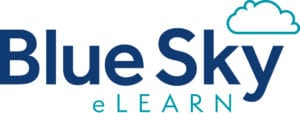
Gary Cokins, founder and CEO of Analytics-Based Performance Management, LLC, is an internationally recognized expert in performance improvement systems, advanced cost management, and predictive business analytics. He’s also a speaker and co-author of Predictive Business Analytics: Forward Looking Capabilities to Improve Business Performance.
And with data analytics being a focus area for those of us in the learning business—two of the leading trends that surfaced in our 2019 Trends in Learning Businesses survey were around using data to make better product decisions and show impact—Gary has tremendous insight to offer on the topic.
In this episode of the Leading Learning podcast, Celisa talks with Gary about predictive business analytics including why it needs to be a part of your organizational competency, common misconceptions and barriers, and tips for getting started with it.
To tune in, just click below. To make sure you catch all of the future episodes, be sure to subscribe by RSS or on iTunes. And, if you like the podcast, be sure to give it a tweet!
Listen to the Show
Read the Show Notes
[00:18] – A preview of what will be covered in this episode where Celisa interviews Gary Cokins, founder and CEO of Analytics-Based Performance Management, LLC, and an expert in performance improvement systems and advanced cost management.
[02:41] – Introduction to Gary and some additional background information about his work.
[04:18] – In the first chapter of the book Predictive Business Analytics, you and your co-author describe predictive business analytics (PBA) as a “competitive edge” and “mission critical,” and you even assert that “The only truly sustainable strategy is to have organizational competency with analytics.” Would you explain what PBA is, and why you see it as so critical? Gary says that PBA is the ability to more accurately – and with more reasonable certainty – predict outcomes. But the reason he refers to it as a “competitive edge” is a little more complex. He talks about the different ways organizations can gain a competitive edge, but the question is whether or not these are sustainable in the long term. He also references Harvard Business professor, Michael Porter who alleges there are three generic strategies: cost leadership, cost differentiation, or focus. But Gary points out the risk and vulnerability associated with each of these, making agility with quicker and smarter decision-making using statistics, analytics, and operations research, the best defense. So rather than a strategy, he says it’s a competency that one requires.
[07:39] – You’ve been involved with data analytics and business analytics for decades now. What are some of the key changes you’ve seen in those areas during your career? Gary shares the first (and obvious) one is compute power. The other one is that executives are a little more knowledgeable and receptive to using analytics.
[09:13] – Gary highlights some of the common misconceptions around business analytics:
- Everybody perceives it as way too complex—and it’s not actually that complicated.
- It’s ok to be good enough—it doesn’t have to be perfect. You just want to get in the ballpark to get insight to make good decisions.
- The analytics aren’t going to necessarily provide you with the answer—they are going to help lead to questions—and then better and more powerful questions.
[11:04] – Could you talk a little more about the role that questions and curiosity play in the work of an analyst/folks dealing with analytics. Gary says for him, it’s always about questions. But curiosity is what he thinks really differentiates strong leaders from less strong leaders. And if you did a personality profile of data scientists you’d probably find they were strong on the end of curiosity.
[12:08] – Gary discusses some possible barriers to implementing predictive business analytics and says perhaps it’s not having enough sufficient analytical skills in your organization. But he thinks it’s actually much more social and technology is no longer the impediment. It’s really issues such as resistance to change, fear of knowing the truth, fear of being measured, fear of being held accountable, etc. Gary notes that in his career, in the past, the best leaders and executives had the best answers, but today that’s not the case. Today the best leaders and executives have the best questions. He emphasizes the importance of creating a culture of discovery and investigation.
[14:33] – You’ve seen a tendency for organizations to over plan and under execute. How can data and business analytics help correct the over planning/under executing tendency, particularly in the realm of operational decisions? Gary talks about how there are actually 3 layers of decisions – strategic, tactical, and operational – and he quotes specific information about this from his book, Predictive Business Analytics.
Sponsor: Authentic Learning Labs
[16:52] – If you’re craving greater confidence with daily decision-making, then we suggest you check out our sponsor for this quarter. Authentic Learning Labs is an education company seeking to bring complementary tech and services to empower publishers and L&D organizations to help elevate their programs. The company leverages technology like AI, Data Analytics, and advanced embeddable, API-based services to complement existing initiatives, offering capabilities that are typically out of reach for resource-stretched groups or growing programs needing to scale.
[17:37] – You emphasize the need to frame the problem or opportunity before looking to data. That framing is a key step, as it helps prevent confirmation bias. Will you say a bit about the need for framing and how to go about it? Gary says that a lot of people tend to jump the gun when they see a problem. But what often trips people up is they do not start framing a problem before they begin collecting the information that will lead to their conclusions. And there’s often bias or preconception so one seeks data that will validate their opinion or bias. By framing a problem, one widens the opportunity and options to formulate more hypotheses. Gary talks about how what most analysts and employees really want is easy access to the data and the ability to manipulate it. But part of the problem is with the IT function because sometimes they can get in the way. There tends to be a wall between IT and the users/analysts and he says that wall needs to come down.
[19:29] – If an organization wants to get started with predictive business analytics, what do you recommend? What are some first steps to take? Gary says there are two schools of thought on this, one being that you need to create a center of excellence, hiring PhD’s with heavy duty statistical backgrounds, etc. The other school of thought (and the one Gary is an advocate of) says what you really need are quick wins at the beginning—so starting small, thinking big—thinking about one type of problem that you may be able to apply some of these advanced analytical tools, have success with it, and then broadcast it within the organization. This can then lead to another complex problem.
[21:16] – In Predictive Business Analytics you suggest that automated decision-based management will be the next big wave to follow after analytics. That book was published in 2013, so a few years have passed. How close are we to automated decision-based management as a reality, or do you now see something else as the next big wave? Gary says he likes to refer to it as automated decision rules and how that is making progress. In terms of the next big wave – and something he didn’t know about in 2013 when he wrote the book – Gary says it’s artificial intelligence, robotic process automation, machine learning, and cognitive software. He points out this is happening much faster than people believe and what concerns him is that very few people/organizations are prepared. This is going to impact and eliminate jobs and this creates a really important role for the human resources/personnel function to basically start preparing their employees to take on higher roles.
Gary strongly encourages everyone watch the 15-minute YouTube video, Humans Need Not Apply to really think about the potential impact of AI.
Sponsor: Blue Sky eLearn
[26:00] – If you’re looking for help with the opportunities and challenges Gary and Celisa are discussing, that face those in learning businesses, then we encourage you to check out our sponsor for this quarter. Blue Sky eLearn is the creator of the Path Learning Management System, an award-winning cloud-based learning solution that allows organizations to easily deliver, track, and monetize valuable education and event content online. Blue Sky also provides webinar and webcast services, helping you maximize your content and create deeper engagement with your audience across the world.
[26:51] – What is one of the most powerful learning experiences you’ve been involved in, as an adult, since finishing your formal education? Gary shares about his experience as a consultant and how he was able to empower others – and accelerate implementation – using a technique called rapid prototyping with iterative remodeling.
[29:48] – How to connect with Gary and/or learn more:
- Website: https://www.garycokins.com
- Email: gcokins@garycokins.com
- LinkedIn: https://www.linkedin.com/in/garycokins/
[30:43] – Wrap-Up
If you are getting value from the Leading Learning podcast, be sure to subscribe by RSS or on iTunes and we would be truly grateful, as it helps us get some data on the impact of what we’re doing.
We’d also appreciate if you give us a rating on iTunes by going to https://www.leadinglearning.com/itunes. We personally appreciate your rating and review, but more importantly reviews and ratings play an important role in helping the podcast show up when people search for content on learning and leading.
And please do be sure to visit our sponsors for this quarter. Find out more about Authentic Learning Labs and Blue Sky eLearn.
Finally, consider telling others about the podcast. You can send a tweet by going to leadinglearning.com/share. You can also Like us on Facebook at facebook.com/leadinglifelonglearning and share us with others there. However you do it, please do help to share the good word about the podcast.
[32:42] – Sign off
See Also:



 3 Resources for Leading Learning Listeners
3 Resources for Leading Learning Listeners
Leave a Reply